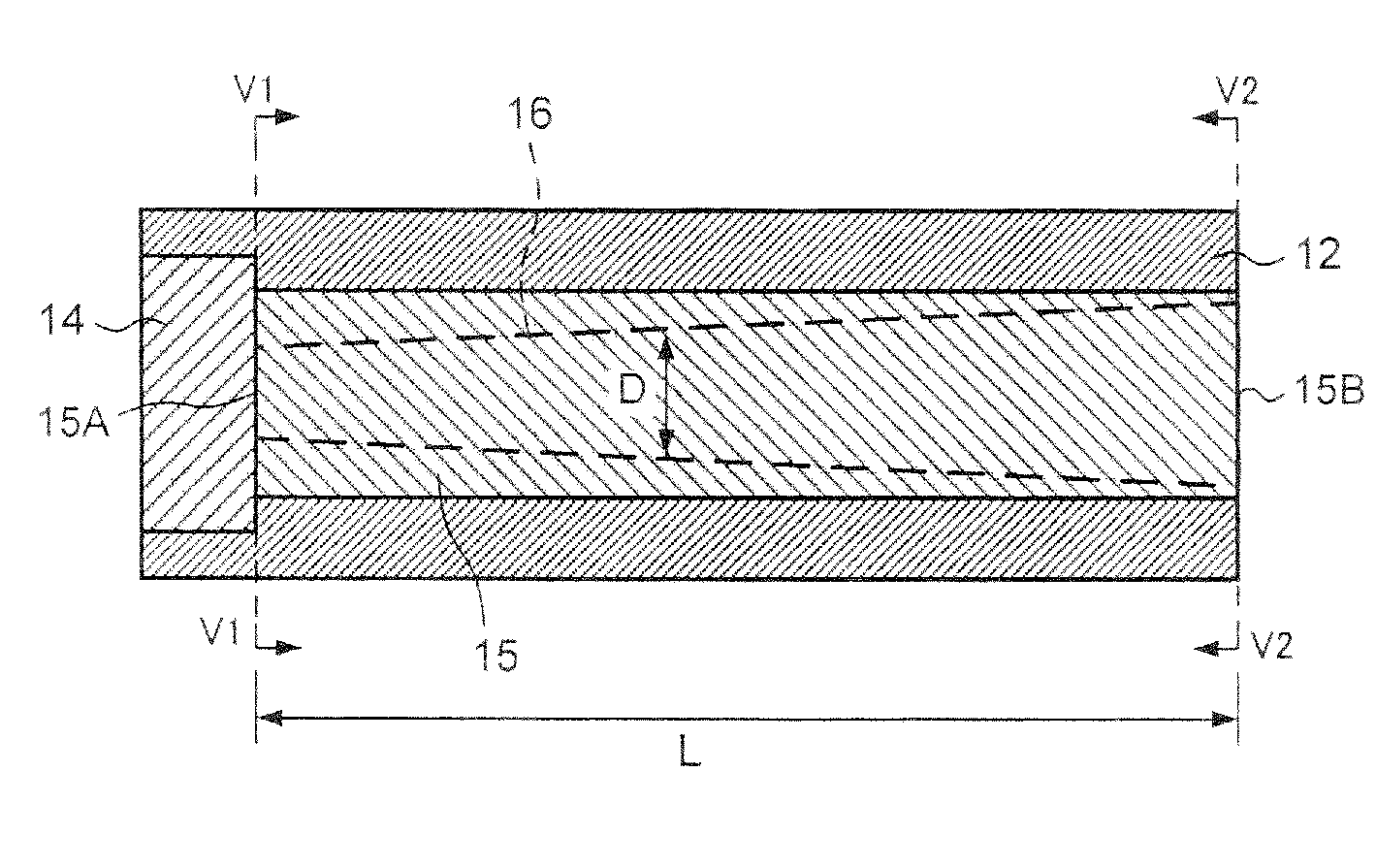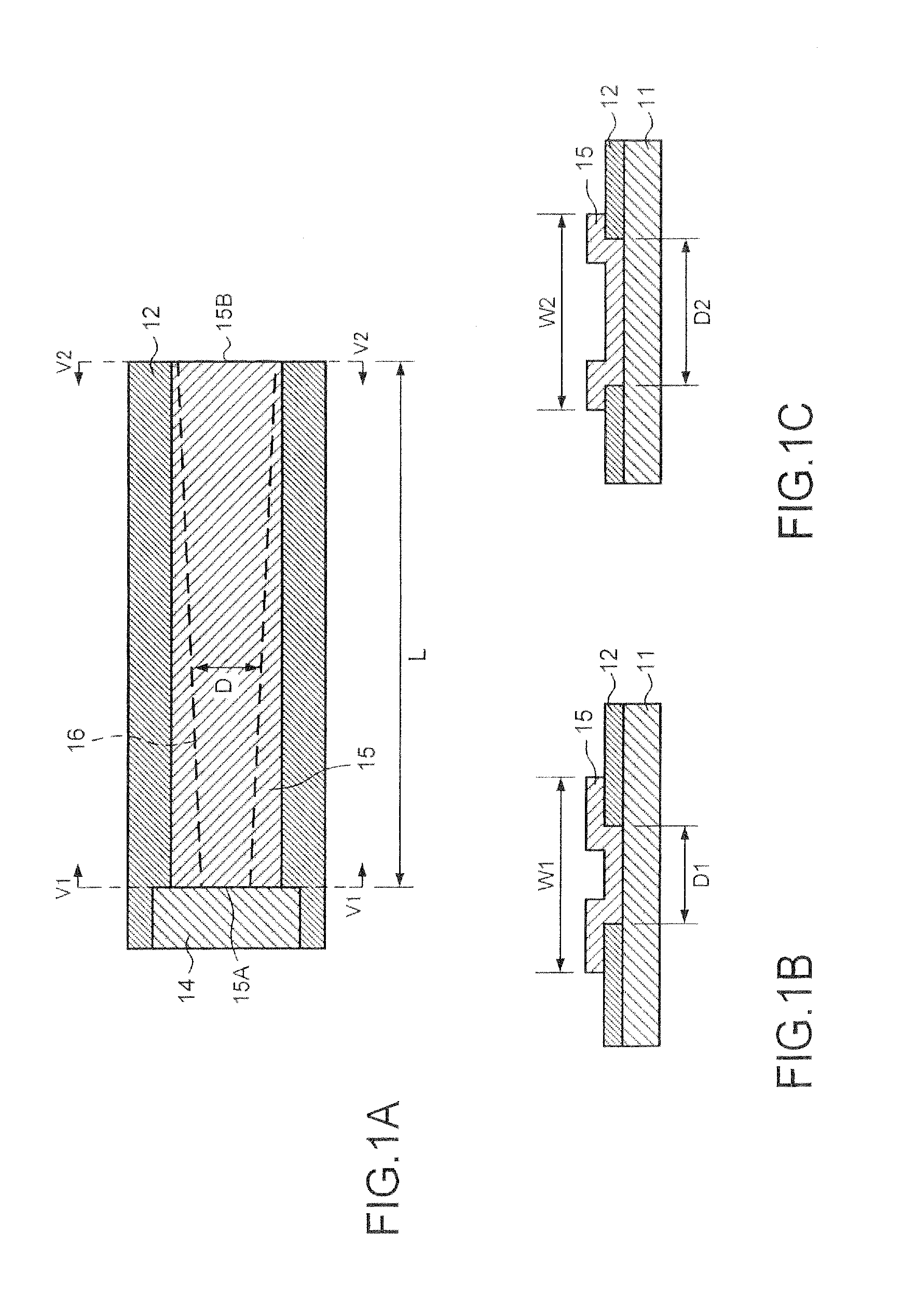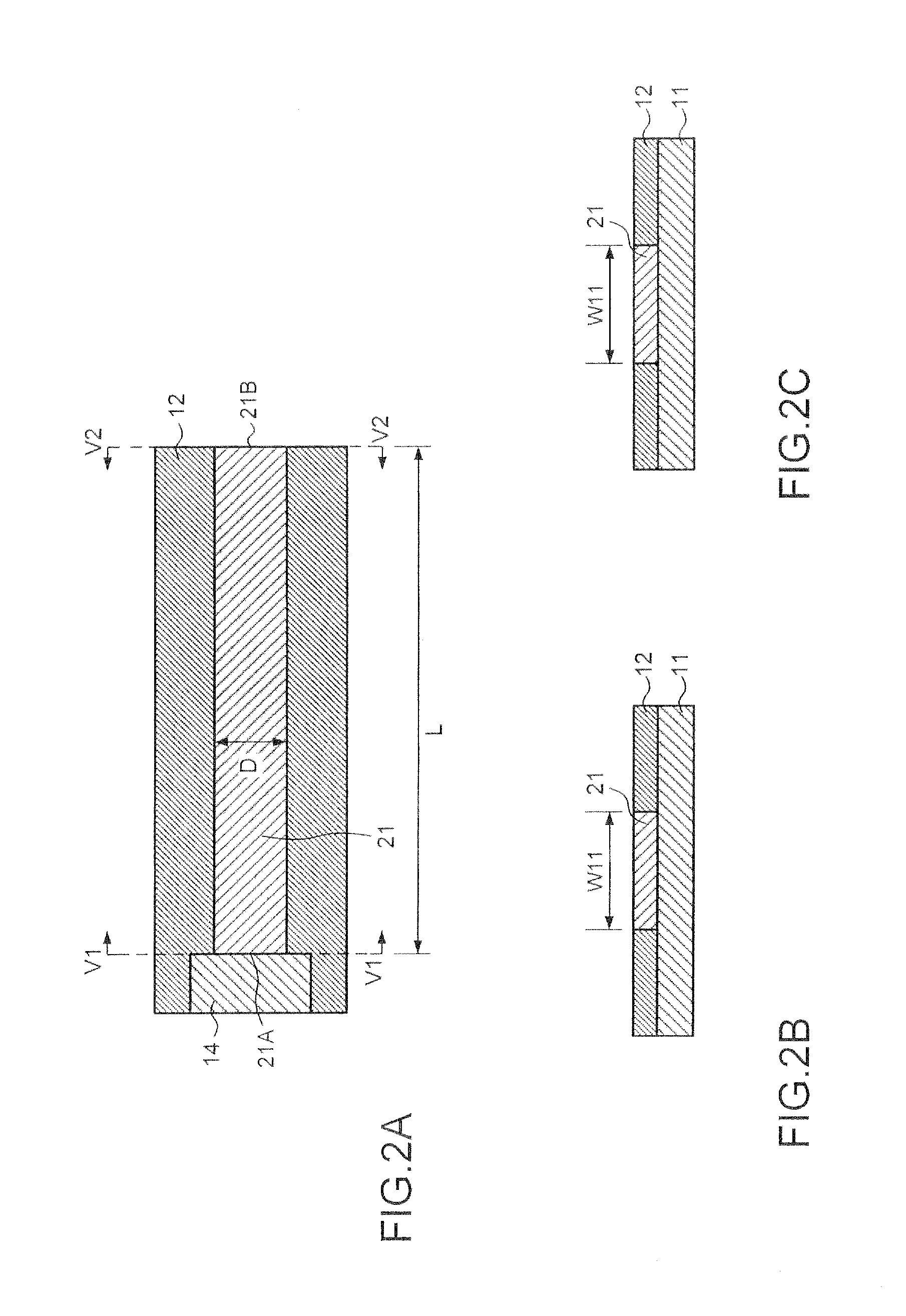Semiconductor light-emitting element
a technology of light-emitting elements and semiconductors, applied in the field of semiconductor light-emitting elements, can solve the problems of increasing the voltage of the element, increasing the difficulty of the patterning process, and breaking the wiring electrode itself, and achieves the effect of increasing the voltage of the element, and increasing the difficulty of the patterning process
- Summary
- Abstract
- Description
- Claims
- Application Information
AI Technical Summary
Benefits of technology
Problems solved by technology
Method used
Image
Examples
first embodiment
[0027]FIG. 1A is a too view schematically illustrating the basic electrode structure (hereafter also referred to as “electrode structure E1”) according to a first embodiment of the invention; and FIGS. 1B and 1C are cross-section views schematically illustrating the cross-section along line V1-V1 and V2-V2 of FIG. 1A respectively. In detail, an insulation layer 12 is formed on a semiconductor layer 11. A pad electrode 14, which is a connection electrode connected by a bonding wire or a similar element to an external circuit and which receives supply of a current, is formed on the insulation layer 12. A wiring electrode 15, electrically connected to the pad electrode 14, is also formed. The wiring electrode 15 stretches or extends on the insulation layer 12 along the surface of the semiconductor layer 11 from the connection portion at which a connection is established with the pad electrode 14, and has a width W1 at the connection portion and a width W2 at a terminal end portion (dis...
second embodiment
[0042]FIGS. 9A and B are a top view of an electrode structure (hereafter also referred to as “E2”) according to a second embodiment of the invention and a partial cross-section views of an LED 50 having the electrode structure E2. FIG. 9B schematically illustrates the cross-section of a portion (i.e., region P1 indicated by a dashed line) of FIG. 9A. As shown in FIG. 9B, the LED 50 is formed by forming a semiconductor layered body comprising AlGaInP-based semiconductor layers on a C-plane sapphire or another growth substrate using e.g., metal-organic chemical vapour deposition (MOCVD); then bonding the semiconductor layered body with an Si or another support substrate; interposed by a bonding layer; and removing the growth substrate using laser-lift-off (LLO) or another method. In more detail, the LED 50 comprises a support substrate 51, a bonding layer 52, a light-reflecting film 53, a transparent electrode layer (p-electrode) 54, a p-type semiconductor layer 55, a light-emitting l...
third embodiment
[0054]In the abovementioned first and second embodiments, descriptions were given for instances in which the width of the contact region in which the wiring electrode is in contact with the semiconductor layer increases from the connecting portion with the connection electrode (e.g., pad electrode) along the direction in which the wiring electrode is stretched; however, this is not provided by way of limitation. It is only necessary that a configuration is present in which the contact area of the wiring electrode increases in an equivalent manner along the direction in which the wiring electrode is stretched without the width of the wiring electrode being reduced.
[0055]FIG. 13A is a top view schematically illustrating an electrode structure, according to a third embodiment of the present invention (hereafter also referred to as “electrode structure; E3”), representing an example of a wiring electrode configured so that the contact area increases in an equivalent manner. FIGS. 13B an...
PUM
 Login to View More
Login to View More Abstract
Description
Claims
Application Information
 Login to View More
Login to View More - R&D
- Intellectual Property
- Life Sciences
- Materials
- Tech Scout
- Unparalleled Data Quality
- Higher Quality Content
- 60% Fewer Hallucinations
Browse by: Latest US Patents, China's latest patents, Technical Efficacy Thesaurus, Application Domain, Technology Topic, Popular Technical Reports.
© 2025 PatSnap. All rights reserved.Legal|Privacy policy|Modern Slavery Act Transparency Statement|Sitemap|About US| Contact US: help@patsnap.com



